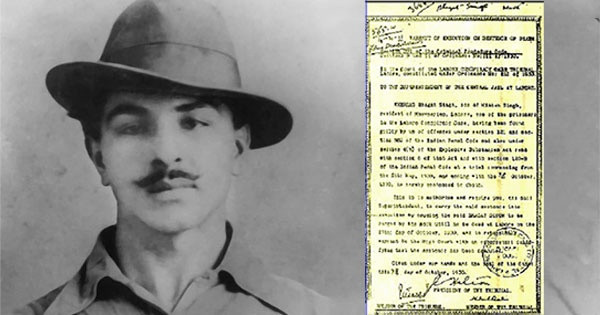
Sep 28 marks important days in the lives of two revered icons of revolutionary action in India – Bhagat Singh and Shankar Guha Niyogi. Both exemplified a sense of identification with the issues of the masses and sought to join the struggle while on the frontlines. Niyogi worked shoulder-to-shoulder with mine workers in Chhattisgarh. Both paid with their lives for their convictions.
One of the commonest tools in the activists toolbox these days seems to be the petition, which is often poorly imagined and unevenly circulated. But it seems to be ubiquitous – if you belong to certain circles and certain groups, then there is a high likelihood of one petition or the other in your mailbox every week, if not more frequently. A petition, in many cases, is also the most convenient – and some may allege – the laziest – way to register protest and outrage.
The number of signatories becomes a bragging point (“3000 signatures” etc) and a certain brilliant linguist and activist from MIT is often the most sought after signatory. Then, throw in a few more names, like African-American revolutionary Angela Davis and some petition-circuit regulars from India and you have the makings of what seems like a stellar petition. The final aim of the petition seems only a hop, skip and jump away.
However, nothing really changes. You wait with bated breath after each such five-star petition and there seems not a hint that the messaging went anywhere. Another petition bites the dust, another petition disappears in the Super Massive Black Hole of Petitions. The road to revolution seems littered with a million petitions.
The suggestion is not to discard entirely the idea of petitions; one need not throw the baby out with the bathwater. Petitions have a history and have played a crucial role in many campaigns. As one of the most recognizable practitioners of the art of making a plea on behalf of those whose rights have been denied, Amnesty International’s foundational and time-tested method of letter-writing has proved its efficacy.
But one should also note a crucial point regarding the difference between the original idea behind Amnesty letters and the more crowdsourced and anonymized method of petitions. The letter writing had a more personal aspect to it and a multiplier effect, when individual letters were authored by people from different parts of the world. They had generally specific targets and destinations. Often, there was something heartfelt which went in the individual message of support from each letter writer.
Petitions take away that individualized statement of support, outrage and protest. They often have no well-thought of addressee, no information of how they will be delivered and attempt to catch the attention of the target person, and also no timeline (Very often, they are formally addressed to the functionaries of the very state that has initiated the oppression.). They merely seem to be a way to assuage and channel outrage in the most innocuous and tranquilizing way, involving the least effort. They represent the ideal of armchair activism.
The situation caused by the pandemic currently has given rise to another digital pandemic, that of webinars. There is a rash of web-based sessions, which, while seeming to connect people from different parts of the country, have also introduced an element not just of social distancing but also of revolutionary distancing. The Indian progressive and activist class seems to have taken to this mode of expression with particular enthusiasm.
While the country witnessed a brutal lockdown that resulted in untold suffering to millions of workers, especially migrant workers, while the governments stood by the sidelines, after having caused the chaos, much of India’s organized labour formations remained strangely inactive and silent – for the well-being of their own comrades of the working class, despite the tinkering of labour laws as well!
And then as the migrant workers, facing distress at their homes as well, have started returning to their earlier places of work, they have come back to no improvement in their conditions or any changes in the provision of social guarantees to them.
Last but not least, the government most recently passed modifications to labour laws during the monsoon session. We are yet to see any mass scale expression of outrage in protest.
Thank heavens the farmers of India decided to take matters in their hand and take to the streets. They probably have no use for petitions and webinars anyway. So they are protesting in the manner they know best – physically, out on the streets, by means of rasta rokos and rail rokos. Observe also how many women are also part of the protests.
However, this sloth and diffidence of the Indian progressive class to take to the streets seems very strange – and unfortunate. Especially, even during the most severe phases of the covide pandemic, the world witnessed rousing protests for rights in different parts of the world, especially where the power of the authorities is disproportionately strong. Yet, we saw protests in Hong Kong, in the United States, in Thailand and in Belarus.
Part of the explanation for the Indian working classes and especially their more formal organizations to come out publicly is probably to be found in the fact that a lot of their leadership is divorced from the actual working conditions. Many of them are actually well-meaning, left-leaning urbanites.
Whatever be the cause, the way the recent changes have been pushed through against the working classes – including the peasantry – and the way dissent is constantly suppressed, it is less certain if rather tame methods like petitions will have any effect. The need of the hour is mass mobilizations and expressions of resistance. These mobilizations also need new leadership from among the people on the ground, with real-world experience. Only then will we be paying sincere tribune to the struggles of Bhagat Singh and Shankar Guha Niyogi.
Aviral Anand is a writer based in Delhi.
SIGN UP FOR COUNTERCURRENTS DAILY NEWSLETTER















































